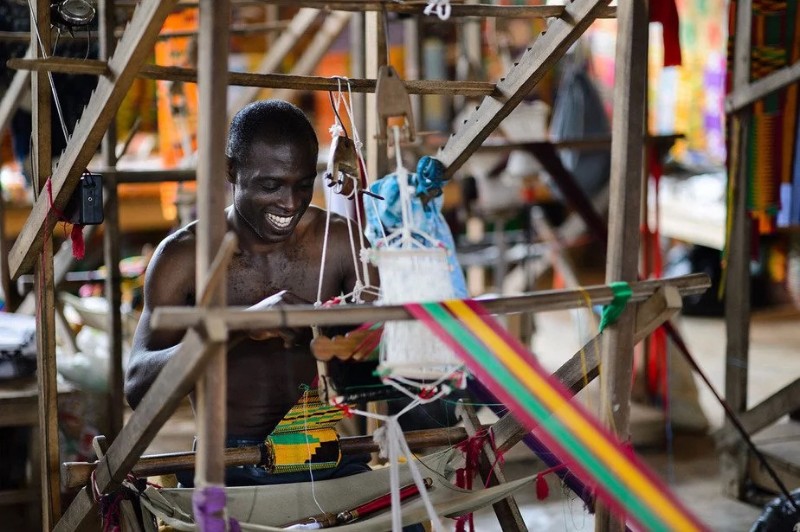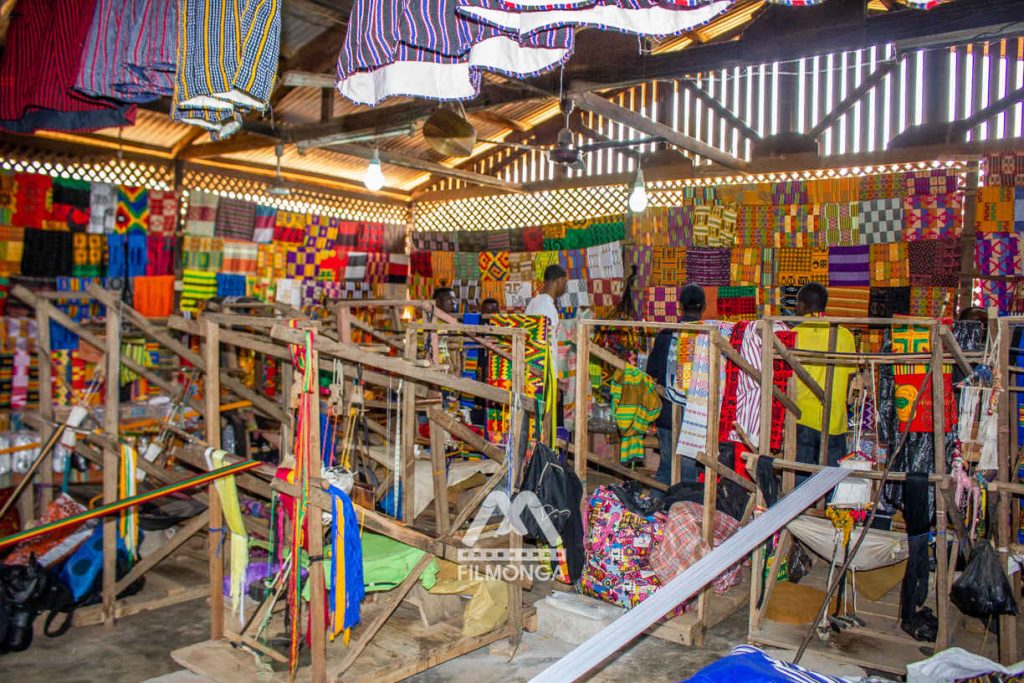Bonwire Kente Weaving Village is a small community located in the Ashanti Region of Ghana, West Africa. It is known as the birthplace of kente cloth, a brightly colored, intricately woven fabric that is traditionally worn by royalty and other important figures in Ghanaian society. The village has a rich history and culture that has been preserved through the generations.
The art of kente weaving has been practiced in Bonwire for over 300 years. According to legend, the first kente weavers in the village were two brothers, Kwaku Ameyaw and his younger brother, called Phebian. They learned the craft from a spider that they observed weaving its web. They then developed their own techniques and styles of weaving that have been passed down through the generations.
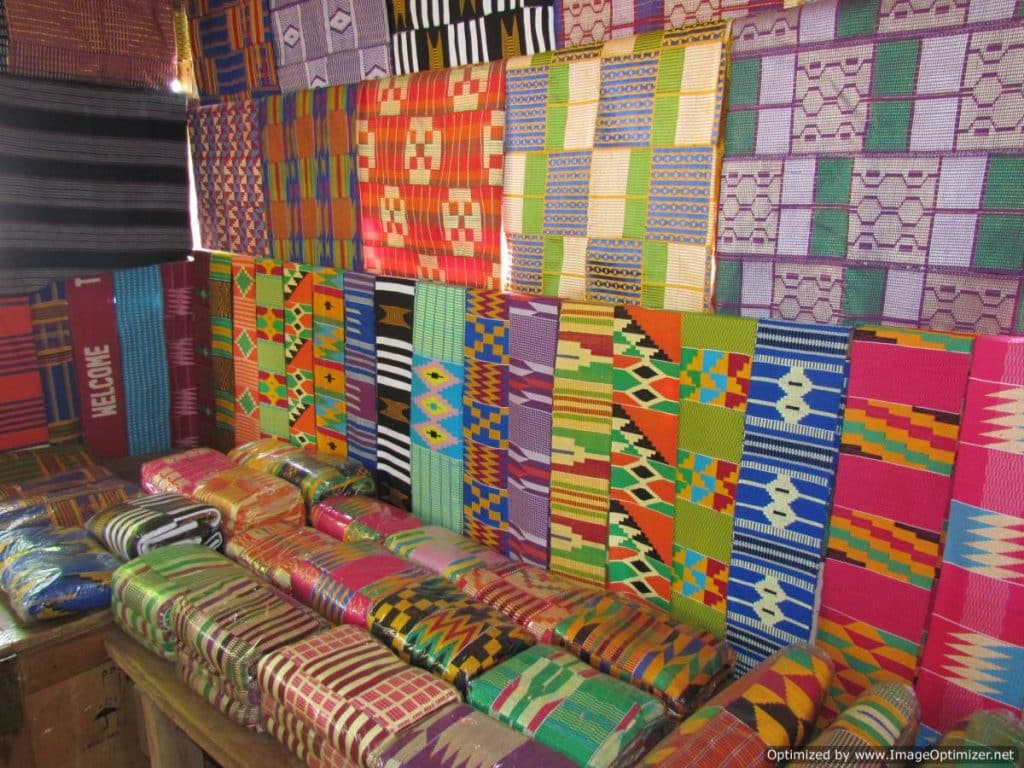
Today, Bonwire Kente Weaving Village is home to many skilled weavers who continue to practice the art of kente weaving using traditional methods. The weaving process involves several steps, including spinning the yarn, dying the yarn with natural dyes, and then weaving the yarn into the intricate patterns and designs that are characteristic of kente cloth.
The yarn used in kente weaving is typically made from silk or cotton and is often dyed using natural ingredients such as plant extracts and bark. The weavers use a loom to weave the yarn into strips that are then sewn together to create the final product. The patterns and designs of kente cloth are highly symbolic and often have meanings related to cultural traditions and beliefs.
In Bonwire Kente Weaving Village, the art of kente weaving is not just a job, but a way of life. Many families have been involved in the craft for generations, passing down their knowledge and skills from one generation to the next. The village is also home to several kente weaving schools, where young people can learn the art and continue the tradition.
One of the most famous kente weavers from Bonwire is the late Kwasi Asare, also known as “Kwasi the Weaver”. He was known for his intricate designs and his ability to weave complex patterns with incredible speed. His work has been exhibited in galleries and museums around the world, and he has won numerous awards for his contributions to the art of kente weaving.
Today, Bonwire Kente Weaving Village is a popular tourist destination, with visitors from around the world coming to see the weavers at work and purchase their products. The village has a thriving market where visitors can buy kente cloth, as well as other handmade crafts and souvenirs. Many of the weavers also offer demonstrations and workshops to teach visitors about the art of kente weaving.
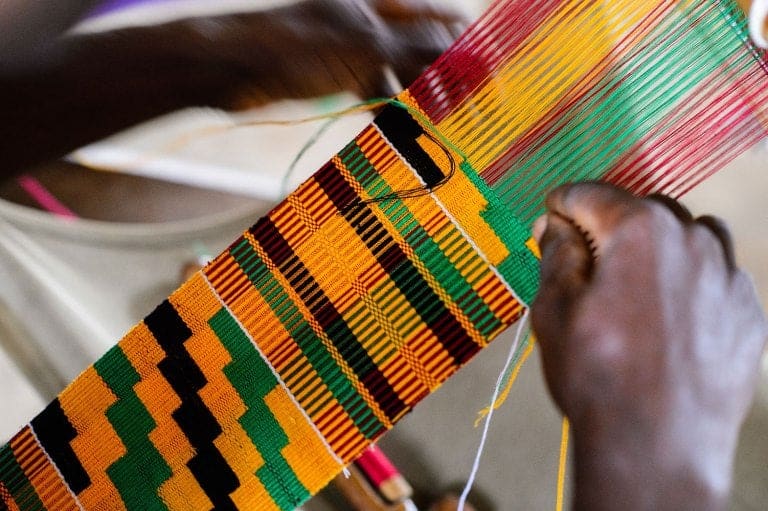
Despite the popularity of kente cloth and the success of the weavers in Bonwire, the industry is facing several challenges. One of the biggest challenges is competition from cheaper, machine-made fabrics. Many weavers are struggling to compete with the low prices of these fabrics, and are finding it difficult to make a living from their craft.
To address this challenge, many weavers in Bonwire are exploring new techniques and styles of weaving that can set their products apart from the mass-produced fabrics. They are also using social media and online marketplaces to reach a wider audience and increase their sales.
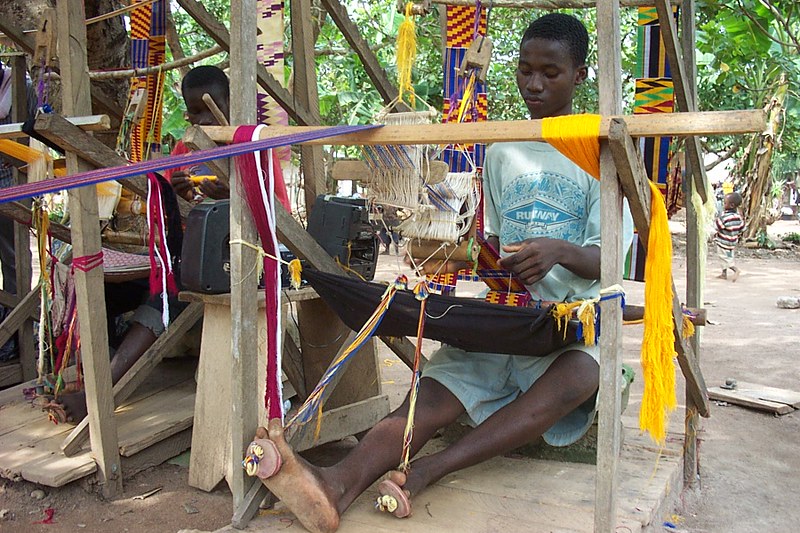
To end, Bonwire Kente Weaving Village is a small community in Ghana that is renowned for the art of kente weaving. This intricate and beautiful fabric is produced using traditional methods that have been passed down through generations of skilled weavers. The village has a rich cultural heritage that is celebrated by locals and visitors alike, and the weavers are committed to preserving their craft for future generations.
Despite facing challenges such as competition from cheaper, machine-made fabrics, the weavers of Bonwire are finding new ways to innovate and promote their products, ensuring that this important cultural tradition continues to thrive. A visit to Bonwire Kente Weaving Village is a must-see for anyone interested in Ghanaian culture and the art of kente weaving.
READ ON: Centre for National Culture


